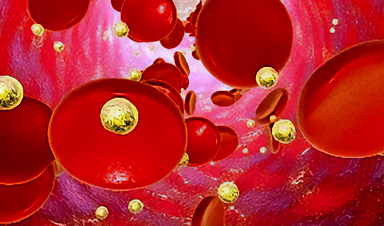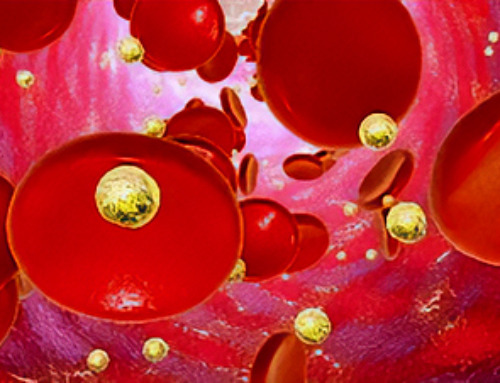According to new research, children exhibit a robust initial immune response to the coronavirus, however, they are unable to transfer this response to long-lasting memory T cells like adults do.
Researchers led by scientists at the Garvan Institute of Medical Research have discovered why children have largely avoided severe symptoms of COVID-19. It turns out that children have a robust initial ‘innate’ immune response that quickly overpowers the virus. However, unlike the immune systems of adults, children’s immune systems do not retain memory of the virus and don’t adapt, so when they are exposed to SARS-CoV-2 again, their bodies still perceive it as a new threat.
“The price that children pay for being so good at getting rid of the virus in the first place is that they don’t have the opportunity to develop ‘adaptive’ memory to protect them the second time they are exposed to the virus,” says lead author Professor Tri Phan, Head of the Intravital Microscopy and Gene Expression (IMAGE) Lab and Co-Lead of the Precision Immunology Program at Garvan.
The immune system has two modes. The innate immune system is the first line of defense, comprising physical barriers such as skin and mucosal surfaces that block viruses from entering. It is also composed of cells that make chemicals to signal to other cells and ward off the viruses. The innate immune system does not distinguish between one type of virus and another.
The second line of defense comprises B and T cells of the adaptive immune system. These cells have specific receptors that can recognize and distinguish different parts of a virus and generate a rapid response to neutralize or limit it.
Infants start with an immune system blank slate, which has a much higher proportion of naïve T cells, the researchers found. As they move through childhood into adulthood and become exposed to more viruses, the naïve T cells are replaced by memory T cells that are locked into making responses to viruses they have seen before.
“Over time, as you get infections, your immune system becomes more ‘educated’, allowing you to make a faster immune response that’s tightly matched to the viruses that have infected you before,” says Associate Professor Philip Britton, pediatric infectious diseases physician at the Children’s Hospital at Westmead, and clinical lead in the study. “Children’s immune systems move from relying mostly on the innate system to needing the adaptive system as a backup as they grow older and are unable to clear viruses as rapidly.”
In the new study, published in the journal Clinical Immunology, Professor Phan, Associate Professor Britton, and colleagues took a deep dive to investigate T cells and cellular immune responses of a small group of children and their household family contacts who had mild or no symptoms from coronavirus (SARS-CoV-2) infection.
The researchers sequenced white blood cell samples to analyze T cells in children and adults at the time of acute infection and one month later.
Because they studied household family contacts who were infected, researchers could control for the impact of genetic or environmental influences on the immune response.
They found that children had many different naive T cells to fight SARS-CoV-2 and made poor memory T cell responses to the virus after they had recovered, whereas the adults had few naïve T cells but made good memory T cell responses after recovery.
Interestingly, the findings point to why older adults can have a kind of immune overreaction to SARS-CoV-2.
“When adults are infected for the first time with SARS-CoV-2, their memory T cells recognize only what they’ve seen before – like a familiar part of the coronavirus that is shared with the common cold coronaviruses,” Professor Phan says.
“This may lock the immune system into a misdirected response that is not specific to SARS-CoV-2. It provides an opportunity for the virus to escape and multiply unchecked to cause more severe symptoms as the immune system ramps up to try and fix the problem.”
News
Nanocrystals Carrying Radioisotopes Offer New Hope for Cancer Treatment
The Science Scientists have developed tiny nanocrystal particles made up of isotopes of the elements lanthanum, vanadium, and oxygen for use in treating cancer. These crystals are smaller than many microbes and can carry isotopes of [...]
New Once-a-Week Shot Promises Life-Changing Relief for Parkinson’s Patients
A once-a-week shot from Australian scientists could spare people with Parkinson’s the grind of taking pills several times a day. The tiny, biodegradable gel sits under the skin and releases steady doses of two [...]
Weekly injectable drug offers hope for Parkinson’s patients
A new weekly injectable drug could transform the lives of more than eight million people living with Parkinson's disease, potentially replacing the need for multiple daily tablets. Scientists from the University of South Australia [...]
Most Plastic in the Ocean Is Invisible—And Deadly
Nanoplastics—particles smaller than a human hair—can pass through cell walls and enter the food web. New research suggest 27 million metric tons of nanoplastics are spread across just the top layer of the North [...]
Repurposed drugs could calm the immune system’s response to nanomedicine
An international study led by researchers at the University of Colorado Anschutz Medical Campus has identified a promising strategy to enhance the safety of nanomedicines, advanced therapies often used in cancer and vaccine treatments, [...]
Nano-Enhanced Hydrogel Strategies for Cartilage Repair
A recent article in Engineering describes the development of a protein-based nanocomposite hydrogel designed to deliver two therapeutic agents—dexamethasone (Dex) and kartogenin (KGN)—to support cartilage repair. The hydrogel is engineered to modulate immune responses and promote [...]
New Cancer Drug Blocks Tumors Without Debilitating Side Effects
A new drug targets RAS-PI3Kα pathways without harmful side effects. It was developed using high-performance computing and AI. A new cancer drug candidate, developed through a collaboration between Lawrence Livermore National Laboratory (LLNL), BridgeBio Oncology [...]
Scientists Are Pretty Close to Replicating the First Thing That Ever Lived
For 400 million years, a leading hypothesis claims, Earth was an “RNA World,” meaning that life must’ve first replicated from RNA before the arrival of proteins and DNA. Unfortunately, scientists have failed to find [...]
Why ‘Peniaphobia’ Is Exploding Among Young People (And Why We Should Be Concerned)
An insidious illness is taking hold among a growing proportion of young people. Little known to the general public, peniaphobia—the fear of becoming poor—is gaining ground among teens and young adults. Discover the causes [...]
Team finds flawed data in recent study relevant to coronavirus antiviral development
The COVID pandemic illustrated how urgently we need antiviral medications capable of treating coronavirus infections. To aid this effort, researchers quickly homed in on part of SARS-CoV-2's molecular structure known as the NiRAN domain—an [...]
Drug-Coated Neural Implants Reduce Immune Rejection
Summary: A new study shows that coating neural prosthetic implants with the anti-inflammatory drug dexamethasone helps reduce the body’s immune response and scar tissue formation. This strategy enhances the long-term performance and stability of electrodes [...]
Scientists discover cancer-fighting bacteria that ‘soak up’ forever chemicals in the body
A family of healthy bacteria may help 'soak up' toxic forever chemicals in the body, warding off their cancerous effects. Forever chemicals, also known as PFAS (per- and polyfluoroalkyl substances), are toxic chemicals that [...]
Johns Hopkins Researchers Uncover a New Way To Kill Cancer Cells
A new study reveals that blocking ribosomal RNA production rewires cancer cell behavior and could help treat genetically unstable tumors. Researchers at the Johns Hopkins Kimmel Cancer Center and the Department of Radiation Oncology and Molecular [...]
AI matches doctors in mapping lung tumors for radiation therapy
In radiation therapy, precision can save lives. Oncologists must carefully map the size and location of a tumor before delivering high-dose radiation to destroy cancer cells while sparing healthy tissue. But this process, called [...]
Scientists Finally “See” Key Protein That Controls Inflammation
Researchers used advanced microscopy to uncover important protein structures. For the first time, two important protein structures in the human body are being visualized, thanks in part to cutting-edge technology at the University of [...]
AI tool detects 9 types of dementia from a single brain scan
Mayo Clinic researchers have developed a new artificial intelligence (AI) tool that helps clinicians identify brain activity patterns linked to nine types of dementia, including Alzheimer's disease, using a single, widely available scan—a transformative [...]





















